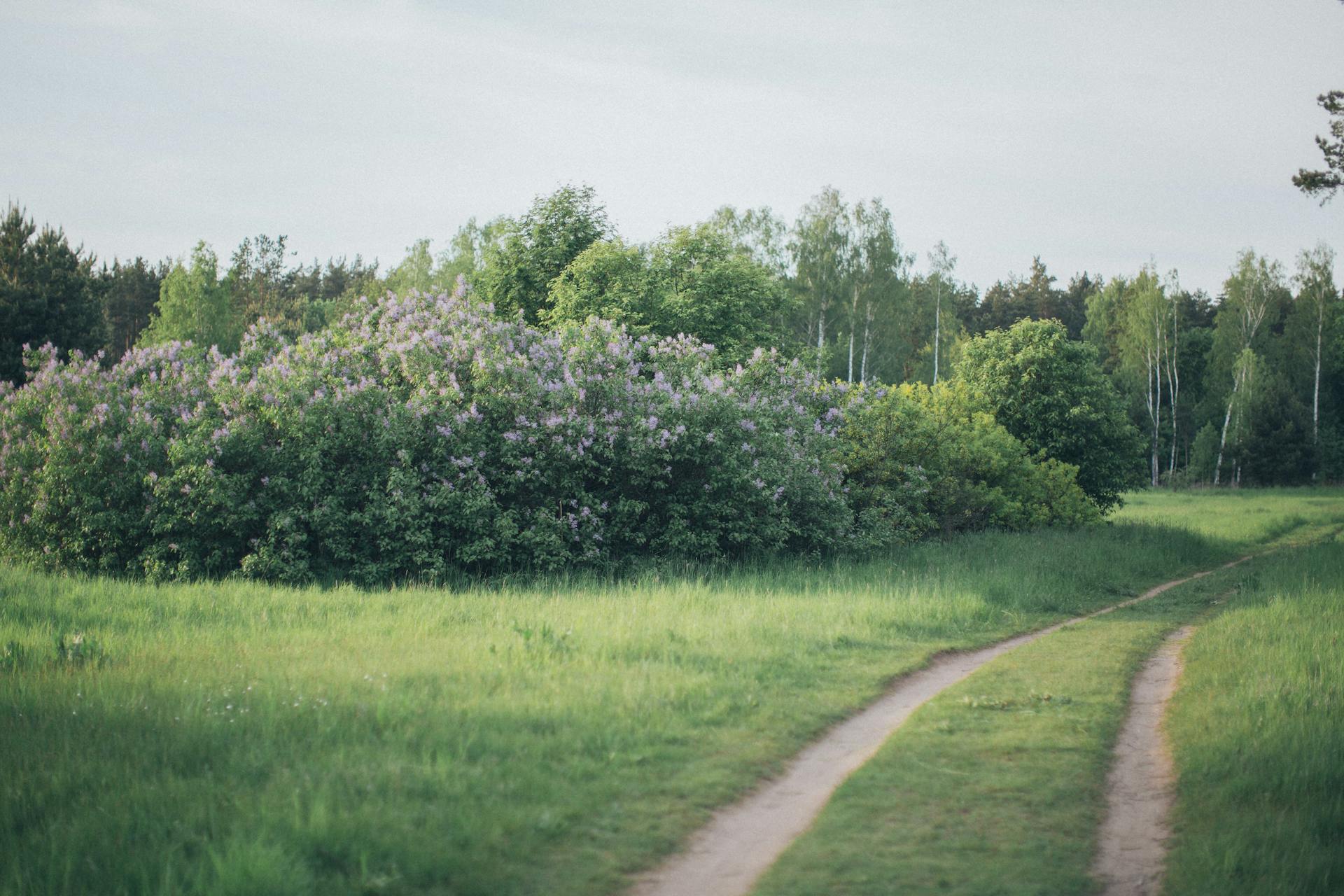
Lilac bushes are a beautiful addition to any garden or landscape. These deciduous shrubs produce clusters of fragrant flowers in shades of pink, purple, white, and blue. Growing and caring for lilac bushes is relatively easy, making them a popular choice among gardeners.
To ensure your lilac bushes thrive, it's important to plant them in the right location. They prefer full sun and well-draining soil with a pH level between 6.0 and 7.0. Lilacs also need enough space to grow, as they can reach heights up to 10 feet and widths up to 12 feet. With the right care, you can enjoy these charming blooms for years to come.
A Fragrant Sign of Spring for American Gardens: Lilacs!
The long lovely history of lilac bushes in American gardens dates back to the 1600s, when European settlers brought them over from their homeland. The scent takes us all back to our grandparents' gardens and triggers memories of a time gone by. The famous Walt Whitman poem "When Lilacs Last in the Dooryard Bloom'd" was written as a tribute to President Lincoln's assassination and the spring lilacs that bloomed during that sorrowful time.

Heirloom varieties of lilacs have been passed down through generations and are still cherished today. Annual festivals celebrating these fragrant blooms can be found all over the country, like on Mackinac Island, Michigan or Spokane, Washington welcoming spring with open arms. Any yard qualifies for an American tradition like this, as no garden is complete without at least one lilac bush.
The beauty and fragrance of the lilac bush are undeniable, making it a must-have for any garden enthusiast. From its rich history in America to its annual celebrations across the country, there's no denying that this plant holds a special place in our hearts. So go ahead and add a lilac bush to your garden this spring - you won't regret it!
The Ideal Spots for Growing Lilacs: Tips and Tricks

The ideal spots for growing lilacs are those that offer the plant plenty of sunlight and well-draining soil. Lilacs prefer slightly alkaline soil with a pH between 6.5 and 7.5, so it's important to test your soil before planting. These beautiful bushes have simple requirements, but they can be quite picky when it comes to their growing conditions. Make sure to choose a spot that provides good air circulation, as this will help reduce the risk of mildew or other fungal diseases. With a little bit of planning, you can create the perfect environment for your lilac bushes to thrive!
If it’s been a while since “lilacs last in the dooryard bloom’d” at your house, try some of these scent-illating types.
Nostalgia-inducing flowers, lilac trees are a favorite among gardeners and enthusiasts. Abandoned farmhouses and old homesteads often have these tough-as-nails disposition shrubs growing somewhere on the property, adding to their charm. Lilacs bloom in late springtime, producing unforgettable fragrance that fills the air.
The showiest common lilac Syringa vulgaris species remains popular today. It is hardy in USDA zones 3 through 7 and requires minimal care for maximum impact. Its tough nature makes lilac bush care easy, and its blooms are sure to impress.
Newer lilac varieties offer everblooming types that perform intermittently throughout the season. Climates hummingbird-attracting lilac flowers are also available for those looking to attract pollinators to their gardens. With related 9 varieties of lilacs to choose from, you're sure to find one that fits your needs!
Dealing with Pests and Diseases that Affect Plants

Dealing with pests and diseases that affect lilac bushes can be tricky, but it's important to keep these fairly hardy shrubs healthy. One of the biggest disease problems is fungal disease powdery mildew, which creates whitish powdery patches on the leaves. Humid summers can exacerbate this issue, but there are both chemical fungicides and natural methods for combatting powdery mildew and limiting fungal spread. Common pests that affect lilacs' foliage include scales and tiny insects, but these can be treated with neem oil or other remedies.
Loving Your Lilacs: Tips for the Perfect Care
Lilacs require a bit of care to keep them looking their best and providing their memorable annual spring show. First, it's important to choose a sunny location with well-draining soil. Lilacs prefer slightly alkaline soil, so adding lime can help if your soil is too acidic. Make sure to water deeply once a week during dry spells, but avoid getting water on the leaves as this can promote fungal diseases. Pruning should be done immediately after flowering by removing any dead or weak branches and cutting back about a third of the oldest stems to encourage new growth.
The scented blooms of lilac bushes are truly breathtaking, but there are some things you can do to make them even more spectacular. Mulching around the base of the plant will help retain moisture and regulate temperature, which will encourage larger flower buds. Fertilizing with bone meal in early spring or fall will also help promote healthy growth and blooming. And finally, don't forget to enjoy your lilacs while they last! Cut some blooms for indoor arrangements or simply take time to sit outside and breathe in their sweet fragrance.
1. Planting lilacs
So you've purchased a dormant bare-root plant (they're typically sold this way) and it's early spring, time to get planting! First, remove the lilac from its plastic bag and let the roots soak in clean water for a few hours. Then, find a spot in your yard where you want the lilac to grow. Dig a hole twice as wide as the root ball and add compost to the nutrient-rich soil. Make sure that when you place the lilac in the hole, its roots don't plant too deep - aim for the same depth it was in the nursery container.
After planting, water thoroughly and apply bark mulch around the root zone to help retain moisture. Lilacs are hardy plants that can tolerate most soils but do best in well-drained soil with plenty of sun exposure. With proper planting techniques and care throughout their growth cycle, lilacs can provide years of fragrant blooms for you to enjoy!
2. Managing lilac pests and diseases
One of the most common pests that affect lilacs is powdery mildew, a white fungus that appears on the leaves and stems. This disease is more common in older varieties of lilacs, but it can also affect newer ones. Although it rarely kills the plant, powdery mildew can weaken it over time, making it more susceptible to other diseases and pests. If you notice powdery mildew on your lilac bushes, make sure to remove any infected leaves and clean up any fallen debris to prevent further spread. You can also treat your lilacs with fungicides or seek advice from your local cooperative extension office for additional recommendations.
Another pest that affects lilacs is the lilac borer, a worm-like insect that feeds on the wood of the plant. The damage caused by this pest can be extensive and often goes unnoticed until it's too late. To prevent lilac borers from infesting your plants, make sure to prune them regularly and avoid injuring the bark. If you suspect an infestation, contact your local cooperative extension office for treatment options. By taking care of your lilacs contact with these pests and diseases, you can enjoy healthy bushes with beautiful blooms year after year.
Frequently Asked Questions
What are the best lilacs to grow at home?
The best lilacs to grow at home are the common lilac (Syringa vulgaris) and the dwarf Korean lilac (Syringa meyeri). These varieties are easy to care for, have lovely fragrances, and produce beautiful spring blooms.
Is be right back a lilac?
No, "be right back" is not a lilac. It is a phrase commonly used to indicate that someone will return shortly.
How to prune lilacs, pruning lilacs?
To prune lilacs, wait until after they have finished blooming and then remove any dead or damaged wood. Cut back any stems that are overgrown or crossing each other, and shape the plant as desired.
Do Lilacs grow well in shade?
Lilacs prefer full sun but can tolerate partial shade. However, too much shade can result in decreased blooming and weaker growth.
How to successfully grow lilacs?
To successfully grow lilacs, plant them in well-draining soil with plenty of sunlight and water them regularly. Prune them after flowering to encourage growth and remove dead wood.


